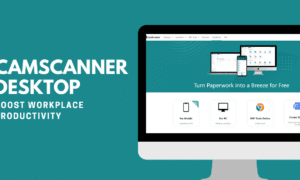Introduction
Wearable technology has emerged as a popular tool for promoting employee well-being and safety in the workplace. However, like any other technological advancement, it also comes with its own set of challenges and limitations that need to be addressed. In this section, we will discuss some of the key challenges and limitations associated with using wearable technology in the workplace.
Challenges and limitations of using wearable technology in the workplace
1. Privacy Concerns:
One of the biggest concerns surrounding wearable technology is privacy. With access to personal data such as heart rate, sleep patterns, and location tracking, employees may feel uncomfortable knowing that their employer has access to this information. This can lead to feelings of mistrust and invasion of privacy.
To address this challenge, it is important for employers to clearly communicate the purpose and use of wearable technology in the workplace. Employees should be made aware that their data will only be used for improving their health and safety at work and not for any other purposes without their consent. Employers should also have strict policies in place regarding the storage and usage of employee data collected through wearables.
2. Technical Limitations:
Another challenge faced by wearable technology is technical limitations. Wearable devices are still evolving, which means they may not always provide accurate or consistent data. For example, a fitness tracker may not accurately measure an employee’s heart rate during high-intensity activities or may give false readings due to external factors such as sweat or movement.
Employers must ensure that the wearables used in their workplace are reliable and regularly calibrated for accurate results. It is also important to have backup systems in place in case of technical malfunctions or data loss.
3. Cost:
The cost of wearable technology can be a major barrier for some employers, especially for small businesses. High-end wearables with advanced features can be expensive, making it difficult for smaller companies to invest in them. Moreover, the cost of regularly replacing and maintaining these devices can add up over time.
To overcome this limitation, employers can consider offering wearable technology as a voluntary benefit or providing subsidies for employees who wish to purchase it. They can also explore more affordable options, such as basic fitness trackers that offer essential features at a lower cost.
4. Employee Adoption:
While some employees may willingly embrace wearable technology, others may resist using it due to various reasons, such as privacy concerns, discomfort with technology, or simply not seeing the benefits of using it. This can lead to low adoption rates and render the investment in wearables ineffective.
To encourage employee adoption, employers should involve their employees in the decision-making process and educate them on the benefits of using wearables. It is also important to provide proper training on how to use these devices and address any concerns or questions they may have.
5. Integration with Existing Systems:
Wearable technology often needs to integrate with existing systems for data collection and analysis. This can be a challenge if the wearable device is not compatible with the company’s current technology infrastructure. Integration issues can lead to delays in data analysis, making it difficult to use the collected information effectively.
To address this challenge, employers should carefully evaluate their technology infrastructure before implementing wearable technology. They may need to make necessary upgrades or invest in new systems to ensure seamless integration.
Future implications and potential advancements in wearable technology
Future implications and potential advancements in wearable technology hold great promise for enhancing employee well-being and improving workplace safety. As technology continues to advance at a rapid pace, the possibilities for using wearable devices to monitor and improve employee health and safety are endless.
One of the most exciting developments in wearable technology is the integration of artificial intelligence (AI). AI-powered wearables have the ability to learn an individual’s habits, patterns, and behaviors, providing personalized insights into their health and safety. This can be particularly beneficial in high-risk industries where employees may be exposed to hazardous environments. AI-powered wearables can analyze data from various sensors, such as heart rate monitors, temperature sensors, and GPS trackers, to detect potential risks or hazards in real-time. This allows employers to take proactive measures to prevent accidents or injuries before they occur.
Another potential advancement in wearable technology is the use of augmented reality (AR) and virtual reality (VR) in training programs. AR and VR technologies allow employees to experience simulated scenarios that mimic real-life situations without any actual risk involved. For example, employees working on construction sites or operating heavy machinery can use AR/VR headsets to practice their skills in a safe environment. This not only enhances their performance but also reduces the likelihood of accidents due to a lack of experience or training.
Furthermore, advancements in biometric sensors could revolutionize workplace safety by continuously monitoring an employee’s vital signs, such as heart rate, blood pressure, and stress levels. These sensors could alert individuals when their body is under excessive strain.
Conclusion
The integration of wearable technology into workplace safety measures has the potential to greatly enhance employee well-being. It not only empowers employees to take control of their own health and safety but also allows employers to make data-driven decisions and implement proactive measures to prevent incidents from occurring. By promoting a culture of proactivity and accountability, improving communication, providing targeted support, and promoting healthy habits, wearable technology can have a positive impact on employee well-being and create a safer and healthier work environment for all.



































